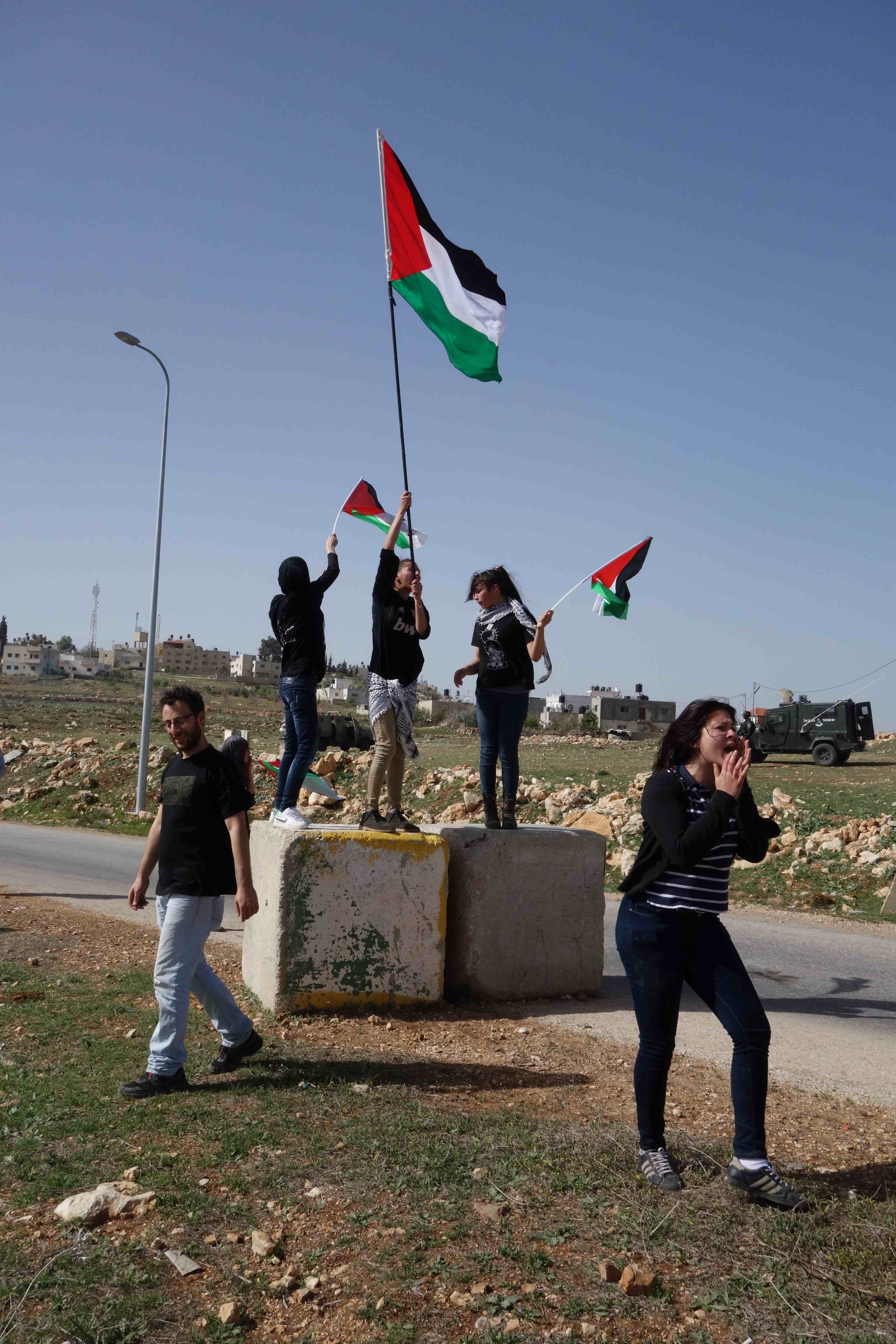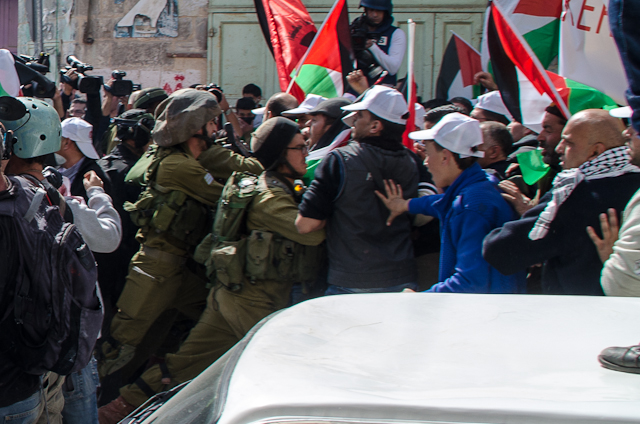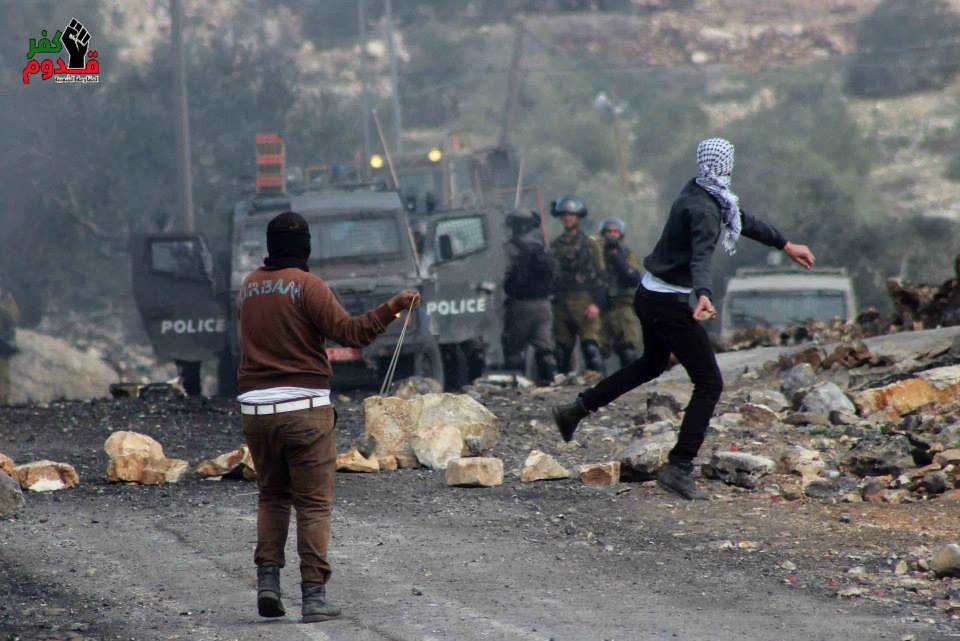Tag: Rubber-coated steel bullets
-
Nabi Saleh honors Muataz Washaha
8th March 2014 | International Solidarity Movement, Team Ramallah | Nabi Saleh, Occupied Palestine On Friday 7th March the protest at An Nabi Salih took on a special significance after local Palestinian man, Moutaz Washaha, was assassinated in his home town of Bir Zeit on Thursday last week. A group of more than 50 Palestinian locals, activist…
-
Fifth annual Open Shuhada Street demonstration in Hebron
21st February 2014 | International Solidarity Movement, Hebron Team | Hebron, Occupied Palestine The fifth annual “Open Shuhada Street” campaign took place on Friday the 21st of February in Hebron. Five people were arrested and 13 treated after being shot by rubber-coated steel bullets during a peaceful demonstration to open Shuhada Street for Palestinians. On the 21st of…
-
Four injured at weekly demonstration in Kafr Qaddom
14th February 2014 | International Solidarity Movement, Nablus Team | Kafr Qaddom, Occupied Palestine At approximately 10:00 a.m. on Friday, the Israeli army positioned themselves on top of the hill overlooking Kafr Qaddom and on the closed road that leads to the illegal settlement, Qedumim. As they did last week, the Israeli army attempted to portray…



